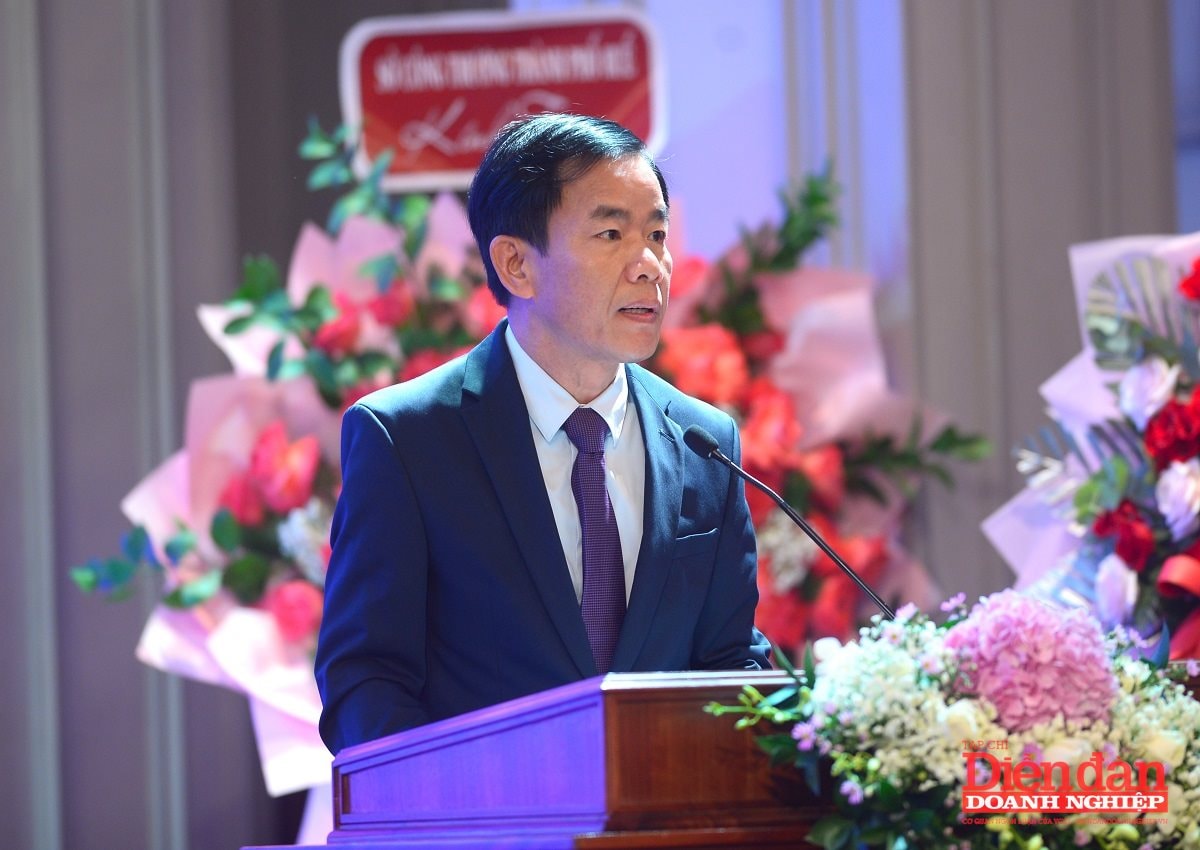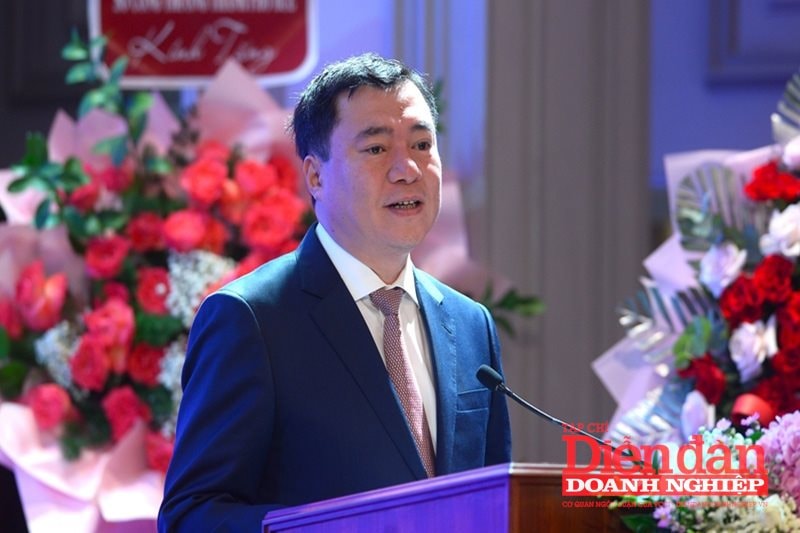Regional Logistics Forum: Leveraged growth to drive the North Central and Central Coastal Regions
The logistics sector is one of the drivers for enhancing national competitiveness in the North Central and Central Coastal regions.
.jpg)
VCCI Vice President Hoang Quang Phong
Speaking at the Sixth Regional Logistics Forum themed “Cross-border Logistics: Leveraged growth to drive the North Central and Central Coastal Regions,” organized by the Business Forum Magazine, the Hue City Department of Industry and Trade, the Vietnam Logistics Business Association (VLA), LEC Group Joint Stock Company, and relevant units, under the direction of the Vietnam Chamber of Commerce and Industry (VCCI) and the Hue City People's Committee, VCCI Vice President Hoang Quang Phong emphasised the strategic role of the logistics industry in Vietnam's economic development amidst deep integration.
VCCI Vice President stated, "With the deeper integration, international trade will develop increasingly, while the world has faced many global challenges that no single country can solve." In that context, logistics is becoming one of the drivers to enhance the competitiveness of each nation.
The VCCI Vice President claims that the rapid exploitation of outer, subterranean, and marine spaces, as well as digital and green revolutions, are all part of Vietnam's new era of growth. Together with strategic advancements in infrastructure, human resources, and institutions, they create new demands while also fostering an environment that supports the logistics sector. In addition to saving cost and time, logistics makes Vietnamese companies and products more competitive. "In the context of integration, logistics services are becoming increasingly important, making a practical contribution to the country's economic growth and participating in solving global issues," Hoang Quang Phong continued.
Besides, Mr. Phong confirmed that the logistics sector needs to adopt new trends, including the sharing economy, digital transformation, green transformation, and circular economy. In addition to being a necessary prerequisite for adjusting to global trends, this presents Vietnamese companies with a chance to boost their competitiveness, cut expenses, and accomplish sustainable development.
Additionally, the VCCI Vice President emphasized the significance of the Planning for the North Central and Central Coast Regions for 2021–2030, with a vision to 2050. By 2030, this region is expected to have a high average per capita income and be rapidly developing, active, and sustainable. The North Central and Central Coast regions will lead the nation in the maritime sector by 2050.
Hue City and the North Central and Central Coast regions hold a strategic position, located at the "crossroads" of the North-South and East-West transport corridors. With its deep-sea ports, new airports, and modern railway system, this region has the potential to become a regional and national logistics hub that links the Greater Mekong Subregion (GMS) with the East-West and North-South Economic Corridors.

Mr Nguyen Van Phuong, Deputy Secretary of the Party Committee and Chairman of the People's Committee of Hue City
According to the Deputy Secretary of the Party Committee and Chairman of the People's Committee of Hue City, Mr. Nguyen Van Phuong, despite challenges, Hue City's economy has seen growth driven by industrial production and tourism. Notable achievements include the establishment of 522 new businesses with VND 5,000 billion in registered capital and adjustments to 12 projects, including the Kim Long Hue automobile assembly complex.
By 2030, Hue City aims to become a leading Southeast Asian hub for culture, tourism, and specialized healthcare, as well as a national center for science, technology, and education. A key part of this strategy involves developing logistics as a pillar of green growth in the region, leveraging digital transformation and the green economy to integrate with product value chains and boost competitiveness.
Modern logistics, with Hue City's synchronized infrastructure network, supports sustainable supply chains by transforming Chan May Port into a major transshipment hub and the Chan May-Lang Co economic zone into a multimodal center, fostering efficient cargo movement and economic growth. This development leverages the area's roads, waterways, aviation, and railways to create a dynamic business sector focused on logistics and sustainable practices.

Mr Nguyen Sinh Nhat Tan, Deputy Minister of Industry and Trade
At this forum, Mr. Nguyen Sinh Nhat Tan, Deputy Minister of Industry and Trade, suggested some key solutions to promote the development of the logistics sector:
First, review and adjust the planning of provinces and cities to align with the new administrative boundaries and the two-tier local government to optimise development resources.
Second, synchronously invest in multimodal logistics infrastructure, especially connecting railways to major seaports such as Chan May, Lien Chieu, and Dung Quat; and develop inland container depots (ICDs) and regional cargo transshipment areas.
Third, establish international logistics centres connected to key ports, serving as both centralised warehouses and cross-border transshipment points.
Fourth, encourage logistics outsourcing, research, and issue preferential policies to support, encourage, and create conditions for attracting cargo to ports in the region.

Overview of the Forum
Fifth, strengthen international and regional cooperation; reform administrative procedures, aiming for a "single window" customs mechanism with neighboring countries, maximising clearance time and reducing transaction costs.
Sixth, promote digital transformation and green transformation to meet the requirements of modern operations while encouraging the widespread adoption of supply chain and logistics management in businesses of all types.
Seventh, effectively leverage on-site training activities and promote logistics training at universities in Central Vietnam to provide logistics human resources, while issuing policies to attract high-quality logistics human resources from major cities to work locally.








